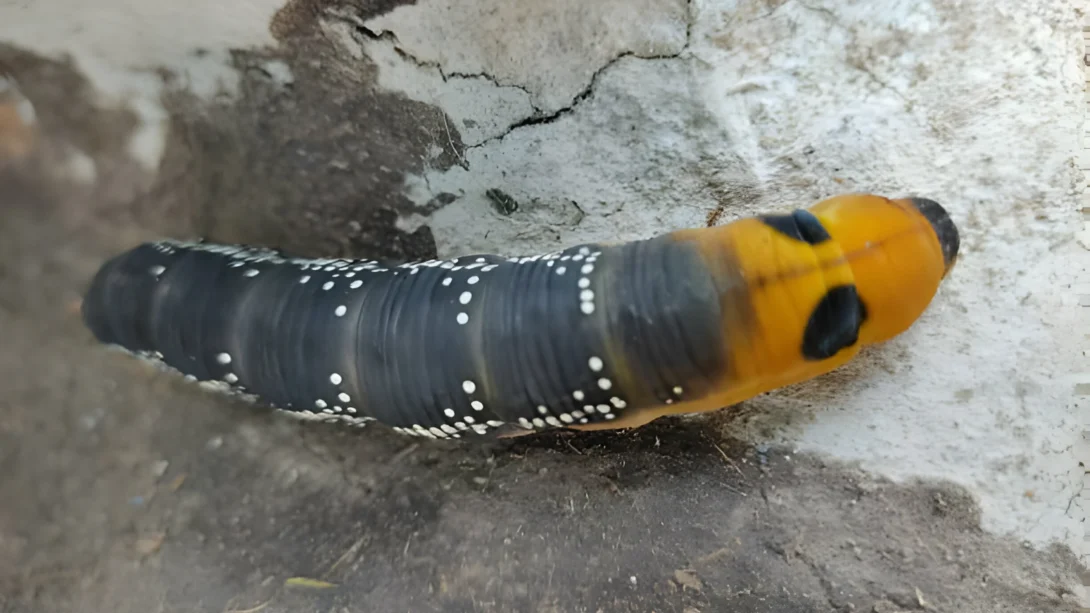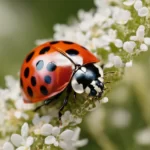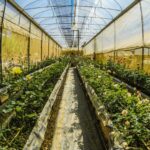The oleander caterpillar, Syntomeida epilais, is a vibrant pest known for its striking orange and black markings. Originating from the Caribbean, this caterpillar has become a notable problem in regions where oleander plants are cultivated. Oleander caterpillars pose a significant threat to these plants, capable of defoliating them if infestations are not managed promptly. This article aims to guide gardeners through the process of identifying, preventing, and controlling oleander caterpillar infestations to protect their oleander bushes and maintain the health of their gardens.
Identifying Oleander Caterpillars and Damage
Oleander caterpillars can be easily identified by their bright orange bodies adorned with black tufts of hair. These caterpillars undergo several life stages, including egg, larva (caterpillar), pupa, and adult moth, but it is the larval stage that causes damage to oleander plants. Gardeners may notice chewed leaves, a clear indication of caterpillar activity, along with the presence of frass (caterpillar droppings) around the affected plant.
The damage is usually most evident on the leaves, where caterpillars have eaten away the green tissue, sometimes leaving only the skeleton behind. Severe infestations can lead to complete defoliation of the plant, which, while rarely fatal to mature oleanders, can significantly weaken the plants and reduce their flowering potential.
Oleander Caterpillar Lifecycle
A thorough understanding of the oleander caterpillar’s lifecycle is crucial for effective management. The lifecycle begins when adult moths lay clusters of bright yellow eggs on the undersides of oleander leaves. These eggs hatch into caterpillars that feed voraciously on the leaves before pupating, often on the same plant or nearby structures. The entire cycle can occur multiple times throughout the warmer months, allowing for several generations to infest oleanders each year.
Recognizing the signs of each stage, especially the egg clusters, can allow for early intervention before the caterpillars cause significant damage. The lifecycle’s timing also provides insights into the best periods for implementing control measures, typically targeting the early stages of infestation.
Preventive Measures
Preventing oleander caterpillar infestations begins with cultural practices aimed at making the environment less hospitable for these pests. Selecting oleander varieties that are less attractive to the moths for planting can be a first step. Additionally, maintaining plant health through proper watering, fertilization, and pruning practices can make oleanders more resilient to infestation and damage.
Regular monitoring of oleander bushes is essential for early detection of caterpillar activity. Inspecting plants weekly for signs of eggs, caterpillars, or damage can help catch infestations before they become severe. Removing infested leaves or pruning affected areas can also reduce the caterpillar population and limit damage.
Mechanical Control Methods
Mechanical control is a direct and immediate way to reduce oleander caterpillar populations. Here are two primary mechanical methods:
- Physical Removal: Wearing gloves, manually pick off caterpillars and egg masses from the plants. This method is most effective when the infestation is localized or detected early. Dispose of the caterpillars and eggs by placing them in a bucket of soapy water to ensure they are killed.
- Water Sprays: A strong jet of water from a garden hose can dislodge caterpillars from the plants. While not as thorough as hand-picking, it can be an effective method to quickly reduce large populations without harming the plants or using chemicals.
Both of these methods are environmentally friendly and safe for the plant, pets, and beneficial insects. However, they do require diligence and may need to be repeated regularly to manage the population effectively.
Biological Control Options
Biological control involves utilizing natural predators and pathogens to manage pest populations. For oleander caterpillars, there are several biological agents that can be effective:
- Natural Predators: Certain bird species, as well as predatory insects such as wasps and spiders, are natural predators of oleander caterpillars. Encouraging these predators in your garden can help control the caterpillar population. Installing bird feeders and maintaining habitats that attract beneficial insects can bolster your garden’s natural defenses.
- Parasitic Wasps: There are wasp species that parasitize oleander caterpillar eggs and larvae. These wasps lay their eggs inside the caterpillars or on the eggs, and the emerging larvae feed on the host, ultimately killing it. While these wasps can be naturally occurring, they are also available for purchase from some biological control suppliers.
- Bacillus thuringiensis (Bt): Bt is a naturally occurring bacterial insecticide that is specific to caterpillars. It is harmless to humans, pets, and beneficial insects. When ingested by caterpillars, it produces toxins that disrupt their digestion, causing them to stop feeding and die. Applying Bt to affected oleander plants according to the product instructions can be a highly effective and environmentally safe method to control caterpillar infestations.
Chemical Control Strategies
Chemical control should be considered a last resort due to the potential impact on non-target species and the environment. If biological and mechanical methods are insufficient, select insecticides can be used:
- Insecticidal Soaps and Oils: These products can be effective against oleander caterpillars when applied directly. They work by suffocating the caterpillars or disrupting their cell membranes. Because these products are less harmful to beneficial insects and break down quickly in the environment, they are a preferred chemical option.
- Selective Insecticides: Products containing spinosad, a natural substance toxic to caterpillars but less harmful to many beneficial insects, can be effective. Spinosad should be applied in the evening to minimize harm to pollinating insects, which are less active at this time.
When using chemical controls, it’s critical to follow the product’s instructions closely, wear protective clothing, and apply treatments carefully to avoid drift and runoff. Always prioritize products that are targeted and have minimal impact on non-target organisms.
Integrated Pest Management (IPM) Approach
Integrated Pest Management (IPM) is a sustainable approach to managing pests by combining biological, cultural, mechanical, and chemical tools in a way that minimizes economic, health, and environmental risks. For oleander caterpillar control, an IPM approach involves:
- Regular Monitoring: The cornerstone of IPM is regular inspection of plants for early detection of pest activity. This enables timely intervention before infestations become severe.
- Cultural Practices: Maintaining the health of oleander plants through proper watering, fertilization, and pruning practices can make them less attractive to pests and more resilient to damage.
- Mechanical and Biological Controls: Prioritizing non-chemical measures such as physical removal of caterpillars and the use of natural predators or Bacillus thuringiensis (Bt) can effectively reduce caterpillar populations with minimal environmental impact.
- Chemical Controls: Use chemical treatments as a last resort, focusing on targeted, less-toxic options like insecticidal soaps, oils, and selective insecticides such as spinosad. Apply these treatments judiciously, following label instructions to protect non-target species and the environment.
By integrating these strategies, gardeners can manage oleander caterpillar populations effectively while supporting a healthy garden ecosystem.
Maintenance and Monitoring After Treatment
After addressing an oleander caterpillar infestation, ongoing care and vigilance are key to preventing future outbreaks:
- Post-Treatment Care: Help oleanders recover from any damage by providing adequate water and nutrients. Light pruning may encourage new growth, but avoid heavy pruning until the plant has fully recovered.
- Ongoing Monitoring: Continue to inspect oleander plants regularly for signs of caterpillar activity. Early detection of a new infestation can significantly reduce the need for intensive control measures.
- Habitat Management: Encourage beneficial insects by planting a diversity of plants, providing water sources, and avoiding broad-spectrum insecticides that can harm these allies.
- Record Keeping: Keeping a journal of pest activity, control measures used, and plant health can be invaluable. This record can help you refine your IPM strategy over time, making it more effective and efficient.
Conclusion
Managing oleander caterpillars requires a balanced, informed approach that prioritizes the health of the plant, the environment, and the local ecosystem. By understanding the pest’s lifecycle, implementing preventive measures, and using a combination of control methods, gardeners can protect their oleanders from damage. An Integrated Pest Management approach not only addresses current infestations but also helps prevent future outbreaks, ensuring that oleanders continue to thrive in the garden. Remember, the goal is not to eliminate all pests but to maintain them at levels where they do not cause significant harm, allowing for a diverse, healthy garden ecosystem.



